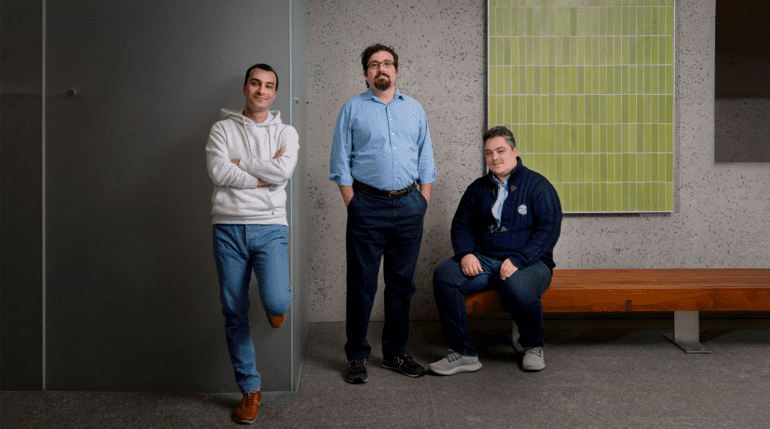TL;DR:
- Engineers at Princeton University leverage AI to predict and prevent plasma instabilities in fusion reactions.
- AI model trained on historical data forecasts tearing mode instabilities milliseconds in advance.
- The approach differs from traditional reactive methods, allowing proactive stabilization of plasma.
- Deep neural networks and reinforcement learning algorithms empower AI control in fusion reactors.
- Successful testing at DIII-D tokamak demonstrates AI’s potential in dynamic fusion reaction management.
Main AI News:
The relentless pursuit of harnessing fusion power as a clean, virtually boundless energy source faces a critical obstacle: maintaining stability within the seething plasma that drives the fusion reaction. When this superheated plasma escapes its magnetic confines, the reaction fizzles out, impeding progress toward sustainable fusion energy.
However, a pioneering team led by Princeton University, comprising engineers, physicists, and data scientists from the University and the Princeton Plasma Physics Laboratory (PPPL), has leveraged artificial intelligence (AI) to anticipate and prevent specific plasma instabilities in real-time.
Recently showcased at the DIII-D National Fusion Facility in San Diego, their AI model, trained solely on historical experimental data, demonstrated remarkable predictive capabilities, foreseeing potential plasma disruptions known as tearing mode instabilities up to 300 milliseconds in advance. This foresight enabled the AI controller to adjust operational parameters promptly, averting destabilizing events within the plasma.
Egemen Kolemen, research leader and associate professor of mechanical and aerospace engineering, emphasized the significance: “By learning from past experiments, the AI could develop a final control policy that supported a stable, high-powered plasma regime in real time, at a real reactor.”
Published in Nature, the research not only heralds a new era of dynamic fusion reaction control but also lays the groundwork for AI to tackle a spectrum of plasma instabilities, historically impeding sustained fusion reactions.
Jaemin Seo, the study’s first author, noted, “Our approach allows us to predict and avoid those instabilities before they ever appear,” highlighting a proactive strategy diverging from traditional reactive approaches.
Fusion Reactor: Bridging AI and Plasma Physics
Given the fleeting nature of tearing mode instabilities, the team turned to AI for its agility in processing and responding to real-time data. Azarakhsh Jalalvand, a research scholar involved in the project, likened the process to training a pilot: rigorous simulation precedes real-world application.
Drawing from past DIII-D tokamak experiments, the team constructed a deep neural network to predict future instability probabilities. This neural network then trained a reinforcement learning algorithm, akin to a novice pilot refining skills in a simulated environment.
“We don’t teach the reinforcement learning model all of the complex physics of a fusion reaction,” explained Jalalvand. “Over time, it learns the optimal pathway for achieving the goal of high power while avoiding the punishment of instability.”
Throughout simulated experiments, SangKyeun Kim, a staff research scientist, fine-tuned the AI’s actions, ensuring compatibility with the tokamak’s capabilities. Eventually, the AI controller underwent successful testing in a live fusion experiment, dynamically adjusting tokamak parameters to preempt instability.
Empowering Future Fusion Endeavors
While this breakthrough underscores AI’s potential in fusion control, researchers underscored ongoing efforts to refine and broaden its application. Seo emphasized the need for broader testing across diverse tokamak scenarios, aiming for universality in AI control.
Moreover, expanding the algorithm’s scope to handle multiple control challenges simultaneously represents another frontier. Ricardo Shousha, a postdoc involved in the experiments, envisioned a unified approach capable of managing various instabilities concurrently.
Beyond immediate applications, the integration of AI into fusion research promises deeper insights into plasma physics. Kolemen highlighted the potential bidirectional learning, with AI models offering novel perspectives that could inform traditional approaches.
Conclusion:
This breakthrough in fusion power control, facilitated by AI, signifies a significant leap toward achieving stable and sustainable fusion energy. By proactively addressing plasma instabilities, researchers are laying the groundwork for a more reliable and efficient fusion energy infrastructure. This advancement not only enhances the feasibility of fusion energy but also opens up new opportunities for innovation and investment in the burgeoning fusion energy market.

